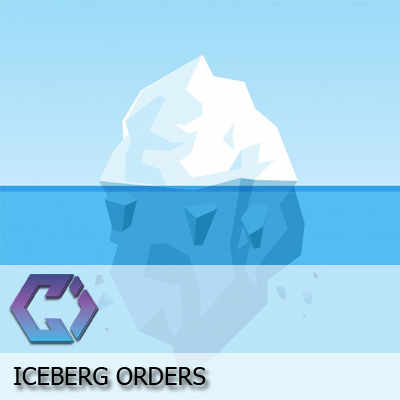
Many professional traders assess Level 2 quotes for information about the potential impact of some open orders on the price of stocks. Level 2 quotes are the quotes that show a backlog of the individual bid and ask prices and the corresponding numbers of shares. Although Level 2 quotes can help traders have an idea of the direction of stocks, sometimes they are just the tip of the iceberg, or even less than it. The presence of iceberg orders may severely hamper the ability of these quotes to give an accurate idea about the direction of stocks.
Iceberg orders are a type of order placed on a public exchange whereby a single large order is divided into smaller limit orders through automation to hide the actual size of the order. Iceberg orders are divided into visible and hidden portions. The visible part is reported to other market participants to be filled while the hidden portion is not. The market participants fill new parts of the hidden portion of the same size only after the visible portion has been filled. Since a market participant could place a normal limit order and replace it by a new order for the same amount each time it is filled, iceberg orders are fully legal and do not give an unfair advantage.
Why iceberg orders, you may ask. Iceberg orders are necessary to reduce significant changes in the price of stocks when they are heavily demanded or supplied. As an example, suppose a market participant places an order on the Toronto Stock Exchange to buy 2,000 shares of Company B at no more than $100 per share, with a visible portion of 200 shares. Other market participants can see only the order of 200 shares at $100 per share, the visible portion of the order, and not the hidden part. If someone places a sell order of 200 shares at $100 per share, the visible portion will be filled, and will then be replaced by a new visible buy order of the same size at the same unit price. The order to buy 1600 shares will remain hidden.
Iceberg orders are especially useful for large retail traders and institutional investors who often have to buy or sell huge quantities of a single stock. Buying or selling a very high quantity of the shares of a company can single-handedly impact its price, and can trigger more buying or selling as the case may be. Thus, those large retail traders and institutional investors often prefer to break their large-sized orders into smaller orders to avoid causing a substantial impact on the market. Since it is only a small portion of the entire order that will be visible on the Level 2 quotes at a time, professional traders may find iceberg orders impossible to identify through the assessment of those quotes.
Nevertheless, iceberg orders can still serve as a guide for the observant and savvy trader. For example, when a trader sees repeating orders of say 200,00 shares from the same market maker, that could serve as an indication of an iceberg order. He can then step in and scalp.



































































































































































































